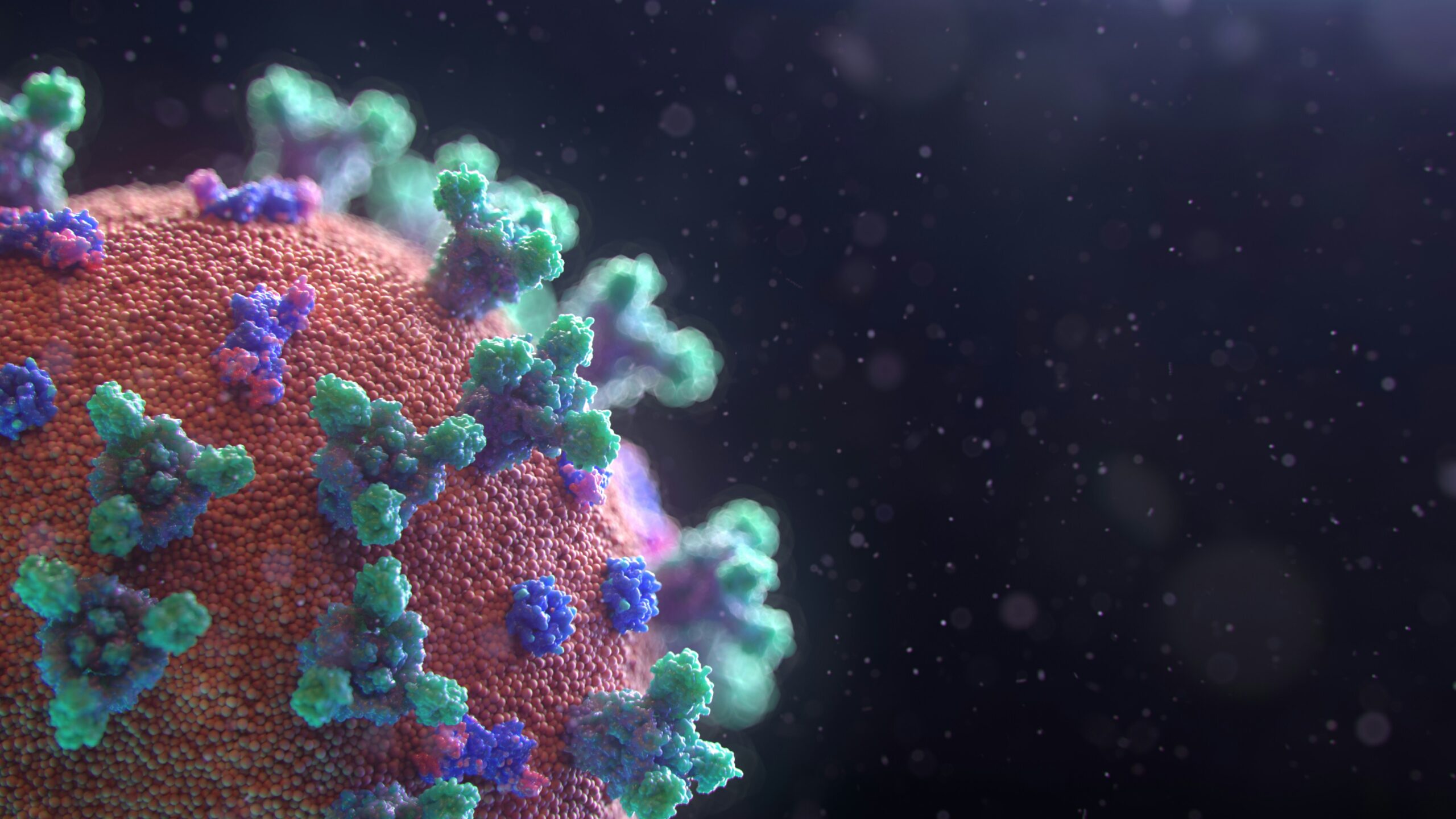Leukoplakia is a skin lesion in the oral cavity. This term was introduced in 1877 and described white patches on the oral mucosa. The definition of leukoplakia also indicates that the white spot or disc on the mucosa cannot be removed by rubbing the area.
Leukoplakia can take different sizes and shapes. They can be small, limited patches and streaks or extensive, diffuse lesions without a clear boundary. The coloration can be white, grey, cream, or white-red. Most commonly, leukoplakia is located on the buccal mucosa, lips, mouth corners, tongue edges, and mouth floor.

Leukoplakia is the oral cavity's reaction to prolonged mucosa irritation. It is widespread in people who smoke. A link between leukoplakia and certain viral infections is also noted. The disease usually appears after the age of 40. The course of the disease is initially asymptomatic or involves only the appearance of lesions. Later, additional symptoms may occur.
The problem should be considered when noticing alarming symptoms, as leukoplakia may suggest malignant changes. The frequency of malignant transformation of leukoplakia depends on the location and type of lesion, the age and sex of the patient. However, there is a risk of squamous cell carcinoma developing in the leukoplakia area. In diagnosis, it is necessary to distinguish leukoplakia from other disease entities with a similar clinical picture.
The treatment of leukoplakia depends on the area occupied by the lesions and the symptoms present. Most important is the elimination of the irritants that trigger leukoplakia. This involves improving oral hygiene, combating habits, and changing diet. Antifungal therapy and other treatments are then proposed.

Oral leukoplakia is a so-called hyperkeratosis![]() . The disease can affect the oral cavity and other areas of the mucosa. Leukoplakia is the body's defense response to factors that cause constant irritation of the oral cavity. There are, therefore, risk factors that can cause leukoplakia. These include:
. The disease can affect the oral cavity and other areas of the mucosa. Leukoplakia is the body's defense response to factors that cause constant irritation of the oral cavity. There are, therefore, risk factors that can cause leukoplakia. These include:
People who regularly smoke have a significantly higher risk of developing leukoplakia. The oral mucosa is very susceptible to various micro-injuries, and therefore, smokers, more often than non-smokers, develop erosions and ulcerations. This is because cigarettes contain many harmful substances that irritate the mucous membranes, gradually leading to mucosal and periodontal disorders. In addition, smokers have a significantly higher risk of throat, tongue, and mouth cancer. Nicotine is also always harmful in forms other than cigarettes. Chewing tobacco![]() is just as dangerous and increases the risk of leukoplakia and oral cancer.
is just as dangerous and increases the risk of leukoplakia and oral cancer.

Strong alcohol is a disinfectant, destroying many bacteria, but in larger quantities, it can contribute to mechanical irritation of the mucosa and gums. This results in congestion, inflammation, and erosions. Alcohols also reduce saliva production, which increases the risk of oral irritation. Too much alcohol consumption can, therefore, contribute to leukoplakia.
Most people have fungi on their skin and mucous membranes that do not cause any disease symptoms, being part of the oral physiological flora. They only become potentially dangerous when they overgrow due to a decline in immunity—infection caused by yeasts of the Candida![]() genus. An untreated yeast infection is risky and can develop other, more serious systemic diseases. Past fungal infections of the oral cavity can also contribute to leukoplakia.
genus. An untreated yeast infection is risky and can develop other, more serious systemic diseases. Past fungal infections of the oral cavity can also contribute to leukoplakia.
Leukoplakic lesions can also follow infections with HPV![]() , EBV
, EBV![]() , HSV
, HSV![]() , and HIV
, and HIV![]() . The etiology of oral leukoplakia has been linked to infection of epithelial cells with the viruses above.
. The etiology of oral leukoplakia has been linked to infection of epithelial cells with the viruses above.

HPV, the human papillomavirus, is a pathogen that can cause many different conditions, depending on its subtype. HPV can be responsible for the development of skin lesions. Infection with the human papillomavirus most often occurs during sexual intercourse and through contact with the epidermis of an infected person.
Epstein-Barr virus is the pathogen responsible for the development of infectious mononucleosis. Infection with the virus can also have other health effects. However, very often, the disease is asymptomatic. The only reservoir of the virus is humans. The virus is present in saliva, and contact with saliva leads to infection.
The herpes virus is a common cause of human infection worldwide. For most people, herpes virus infection is harmless but is perceived as a nuisance. The virus is mainly responsible for lesions in the upper parts of the body, i.e., the mucous membranes of the mouth, facial skin, conjunctiva, and cornea. Infection can develop due to direct contact of the mucous membranes with the secretions of an infected person or after contact with infected objects.
This virus causes a chronic infection that gradually, over the years, impairs lymphocyte function. If left untreated, it leads to acquired immunodeficiency syndrome. A malfunctioning immune system promotes a variety of infections and diseases. This is why HIV-infected people often develop leukoplakia. HIV infection can occur after contact with blood and certain biological materials through mucous membranes.
Chronic irritation of the oral mucosa can lead to leukoplakia. Therefore, people who habitually bite their tongue or other oral surfaces are at greater risk of leukoplakia. Prolonged mechanical mucosa irritation can also occur through ill-fitting dental restorations![]() or sharp edges of fillings. Irritating factors also include ultraviolet radiation and the impact of prosthetic restorations.
or sharp edges of fillings. Irritating factors also include ultraviolet radiation and the impact of prosthetic restorations.

It is suspected that even vitamin and mineral deficiencies can lead to leukoplakia. Particular attention is paid to deficiencies of vitamins A, B, and iron. Iron deficiency anemia causes dry mouth, which promotes irritation. Vitamin A and B![]() deficiencies also promote hypersensitivity of the mucous membranes. An inadequate and nutrient-poor diet is a risk factor for leukoplakia. Frequent consumption of irritating foods, for example, acidic, spicy, or hard-textured foods, can be an additional factor.
deficiencies also promote hypersensitivity of the mucous membranes. An inadequate and nutrient-poor diet is a risk factor for leukoplakia. Frequent consumption of irritating foods, for example, acidic, spicy, or hard-textured foods, can be an additional factor.
The last cause of leukoplakia we described is genetics. If leukoplakia already runs in your family, your risk of developing the disease is higher. Some people may, therefore, have an inherited predisposition to irritation of the oral mucosa. It may also be related to the mouth's structure or a genetic decrease in saliva secretion.
Leukopathy is a disease that can affect not only the mouth but also other areas of the mucosa. A lesion on the mucous membrane manifests as white spots of varying sizes. At first, it may be confused with other conditions because white patches, streaks, and spots are common symptoms of various diseases. However, leukoplakic lesions are usually painless, do not disappear, and cannot be peeled off or wiped off.
The most common site of leukoplakia is the mouth's lower part and the tongue's lateral surface. Leukoplakia lesions are not always dangerous, especially at first, but they should be observed and treated as early as possible. You should see your dentist immediately when you notice worrying symptoms. Leukoplakia can lead to severe complications and, if detected at an advanced stage, is dangerous. To recognize leukoplakia, consider the following symptoms:
Leukoplakia can take different sizes and shapes. Lesions are most commonly seen on the buccal mucosa, lips, mouth corners, tongue, and floor. Leukoplakia may be widespread or small in extent and have a varied pattern. Lesions may resemble white patches, streaks, lines, cracks, or mosaics. There is also a type of Oral Hairy Leukoplakia![]() , whose mucosal lesions have a specific appearance. The spots look as if they cover the hair. The coloration can be white, grey, cream, or white-red. These lesions are not painful and are not removable by touch. Over time, they may resolve spontaneously or through lifestyle changes.
, whose mucosal lesions have a specific appearance. The spots look as if they cover the hair. The coloration can be white, grey, cream, or white-red. These lesions are not painful and are not removable by touch. Over time, they may resolve spontaneously or through lifestyle changes.

At first, in leukoplakia, the patches are painless. However, over time, symptoms such as mouth pain and burning can occur when further irritation occurs. The pain usually occurs when eating spicy, acidic, salty, or hot foods that irritate the mucous membrane.
The feeling of dry mouth most often occurs due to reduced saliva production. It is not uncommon for dry mouth to be the result of dehydration. In leukoplakia, excessive dry mouth may occur. Reduced saliva production by the salivary glands most often manifests this unpleasant condition. Prolonged dry mouth can negatively affect chewing food, swallowing, and speaking.
The most crucial role in treating leukoplakia is determining the type of condition. The doctor, usually a dentist, assesses the lesions' appearance and location and contributing factors' contribution. In addition, histopathological examinations![]() are also helpful in the diagnosis.
are also helpful in the diagnosis.
Histopathological examination involves taking a section of the lesion and sending it to the laboratory. This examination is conducted especially if the treatment methods introduced have been unsuccessful. The histopathological examination helps to identify whether the lesion is cancerous.

Knowing other disease entities with a similar clinical picture helps differentiate leukoplakia. Such conditions include:
A fungal infection also produces similar symptoms in the form of white patches in the mouth. In addition to this, symptoms such as dryness and burning in the mouth can also occur. Fungal infections are superficial inflammations of the oral mucosa caused by Candida yeast. Fungal strains become pathogenic under certain conditions, with several contributing factors disrupting the biocenosis of the system. This is most often associated with a weakened immune system.
Oral lichen planus is most commonly characterized by lesions resembling a non-painful reticulate, white-colored lesion, usually located on the inside of the cheeks and sides of the tongue. These lesions may resemble the symptoms of leukoplakia. Lichen planus is a common chronic inflammatory disease of the skin and mucous membranes. Its etiology remains unknown but may be related to the functioning of the immune system.
Sometimes, symptoms such as oral lesions, burning, and pain may indicate allergies. Allergic reactions in the oral cavity occasionally co-occur with skin lesions. Certain regions of the mouth are susceptible to irritants, as they penetrate easily through the tissue there. Allergic oral mucositis occurs with local contact with an allergen or due to systemic allergens. In cases of allergy, swelling is a common symptom distinguishing the condition from leukoplakia.
White spongiform nevus is a rare hereditary condition. It is classified as a disease of the mucous membrane. The condition appears soon after birth and persists throughout life. White spongiform nevus is categorized as a disease of the skin and mucous membranes. It manifests by white, pudgy plaques on the oral mucosa that do not cause pain. The symptoms may resemble leukoplakia.
Accidental overbiting of the cheek can cause white plaques that are rough. This type of injury disappears spontaneously quite quickly, unlike leukoplakia. Also, an injury can occur as a result of burning hot food. After a few days, white plaque and skin coming off the tongue and palate may be visible.

Treatment depends on the clinical and histological picture. First, all possible causes of leukoplakia should be determined, and irritants should be eliminated. A change of habits is necessary. In addition, various treatment methods are used. Leukoplakia is a curable condition. Noticing symptoms should prompt medical attention, as untreated leukoplakia can lead to cancer. Treatment options for leukoplakia include:

The first step in treating leukoplakia is eliminating factors contributing to mucosal irritation. This may mean quitting smoking or changing your diet. Foods that act as irritants, such as alcohol and spicy and salty products, should be significantly reduced. It is also essential to improve oral hygiene.
If a fungal infection is suspected to be the cause of leukoplakia, antifungal medication is used. General treatment is mainly carried out in patients unresponsive to topical therapy and immunocompromised patients with severe disease.
Antiviral drugs are introduced if a viral infection is suspected to cause leukoplakia. Antiviral substances are usually used to treat hairy leukoplakia, leading to a reduction or disappearance of the lesions.
Topical administration of 13-cis retinoid acid is another treatment option for leukoplakia. Retinoids are derivatives of vitamin A. Due to the effect of retinoids on the processes that regulate cell division, they have found application in treating certain pre-neoplastic conditions and malignant diseases, such as leukoplakia.

Taking B vitamins and A vitamins, as well as iron, may be helpful in treatment. These components affect the overall condition of the oral cavity, so they should be supplemented, especially in case of deficiencies.
In severe cases, surgical treatment is possible. However, surgical treatment of large lesions may result in scarring. Traditional surgical treatment is increasingly being replaced by other methods, such as laser therapy![]() , which uses light radiation of varying power. Cryotherapy
, which uses light radiation of varying power. Cryotherapy![]() is also possible. Cryotherapy is a physical treatment that uses the healing effects of low temperatures. In the case of leukoplakia, liquid nitrogen is utilized as a cooling agent.
is also possible. Cryotherapy is a physical treatment that uses the healing effects of low temperatures. In the case of leukoplakia, liquid nitrogen is utilized as a cooling agent.
The use of cytostatics is reserved for multifocal lesions that are difficult to treat surgically. Cytostatic drugs are a well-known group of anticancer drugs with different origins and mechanisms of action. Above all, an essential element in treating leukoplakia is the continuous monitoring of patients and the observation of recurrent lesions. If cancer foci are found, radical removal of the lesion with possible chemotherapy or radiotherapy is carried out.
Leukoplakia is described as a pre-neoplastic condition. This means that a complication of leukoplakia can be cancer. Attention is drawn to not underestimating the symptoms of leukoplakia, as there is a high risk of leukoplakia lesions transforming into cancerous lesions. This applies to squamous cell carcinoma![]() .
.

The appearance of leukoplakia has some relation to the risk of malignant transformation. The thicker the lesion, the greater the risk. Lesions, where leukoplakia coexists with erythroplakia, are also dangerous. Regular dentist visits help detect various types of inflammation, disease, and lesions of the teeth and beyond at an early stage. Therefore, it is a good idea to go for regular dental checkups to reduce the risk of severe consequences of leukoplakia.
The oral cavity is one of the organs where squamous cell carcinoma can develop. Oral squamous cell carcinoma disease is a prevalent type of cancer in this area of the body. The main symptoms are the formation of ulceration on the oral mucosa and infiltration, as well as varying degrees of pain with eating and restricted tongue mobility. The lip, on the other hand, may develop a marked induration and pain. The prognosis depends on the stage at which squamous cell carcinoma is diagnosed. In the case of early diagnoses, the chance of cure is much higher than when advanced cases are diagnosed.
Leukoplakia is a condition characterized by the appearance of white patches on mucous membranes in the oral cavity. Leukoplakia lesions are usually painless, do not disappear, and cannot be peeled off or wiped off. The most common site for leukoplakia is the mouth's lower part and the tongue's lateral surface.
Leukoplakia is the body's defense response to factors that cause constant irritation of the oral cavity. Such factors may include cigarette smoking and excessive alcohol consumption. Leukoplakic lesions may also result from untreated fungal and viral infections. For a spot to be considered leukoplakia, other conditions that may give a similar clinical picture must be excluded. Leukoplakia can easily be confused with different ailments, so dental consultation is essential.
Leukoplakia lesions are not always dangerous, especially at first, but they should be observed and treated as early as possible. Leukoplakia is the most common premalignant lesion, i.e., with an increased risk of malignancy, in the oral cavity. If leukoplakia is found, all possible causative factors should be eliminated, and a treatment matched to the cause should be introduced.